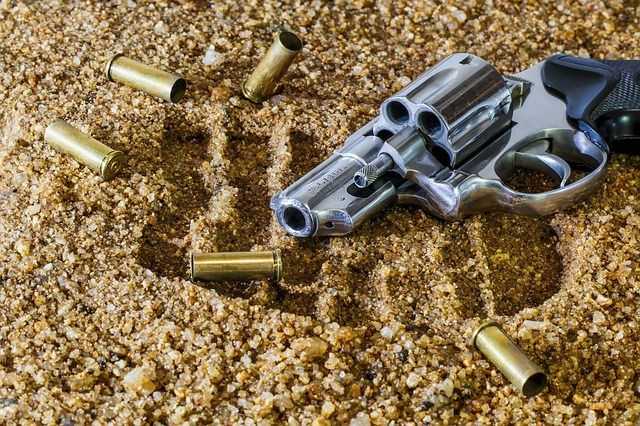Percentage Of Firearm Deaths In California Goes Up Despite Drop In Nonfatal Gunshot Injuries
KEY POINTS
- From 2005 to2015, the United States has seen more than 350,000 deaths due to firearm injuries
- A new study pointed out there was a rise in gunshot fatalities despite a drop in the number of firearm injuries
- Researchers recommend a "scoop and run" strategy to save lives during gunshot injuries
Even though California has seen a considerable drop in firearm injuries in recent years, there seems to be a substantial rise in the state's death rate among people with gunshot wounds, a new study revealed.
Firearm injury is a significant cause of mortality and morbidity in the United States, resulting in over 350,000 deaths nationwide from 2005 to 2015. Gun-violence research experts at UC Davis Health said they carried out the study hoping other states can learn from their findings and use their efforts as a basis for improving firearm injury prevention. The findings are published in JAMA Network Open.
"We found that the number of nonfatal firearm injuries in California decreased over an 11-year period, primarily due to a drop in firearm assaults. However, the lethality of those and other firearm injuries did not go down. In fact, it went up," said Sarabeth Spitzer, lead author and a UC Davis research intern at the time of the study.
The study pointed out the overall increase in fatality rates might be due to a rise in the number of self-inflicted injuries, which, according to experts, are deadlier than other kinds of firearm injuries.
Firearm injuries, even when they aren’t fatal, pose a significant health burden with social and economic costs. People who survived gunshot injuries face long-term physical and psychologically devastating effects that need years of healthcare rehabilitation and attention. Till now, very little was known about the distribution and types of nonfatal firearm injuries in the U.S.
The researchers who sought to observe the trends and distributions of nonfatal firearm injuries and the lethality of firearm injuries in California from 2005 to 2015 found a 38% decrease in nonfatal firearm injuries in the state. However, the overall case-fatality ratio (CFR) increased by 20.7%. The case-fatality ratio refers to the proportion of deaths from a certain health condition compared to the total number of individuals diagnosed with the same disease for a particular period.
"The increase in the overall CFR may be due to a rise in the proportion of self-inflicted firearm injuries, which are usually deadlier than the other types of firearm injuries," said Spitzer, who is a general surgery resident at Brigham and Women's Hospital.
The researchers highlighted the following trends in firearm injuries in California:
- Nearly 81,000 emergency department visits and hospitalizations in the state were due to nonfatal firearm injuries
- 70% of nonfatal injuries were from assaults
- 24% of them were unintentional injuries
- 2% was self-inflicted and 5% undetermined
They also found gunshot incidents varied considerably among different counties within the state. Income disparities were also reported. About 30% of people with assault-related injuries were more likely to belong to the lowest income quartile.
The researchers added there was a need for improvement in the timely treatment of firearm injuries. They advised the first responders to adopt the “scoop and run” strategy to get the injured person to a healthcare facility at the earliest.
The researchers used data from California’s Office of Statewide Health Planning and Development for people treated in emergency departments or discharged from hospitals. The study also included information from the Centers for Diseases Control and Prevention's (CDC) WISQARS for fatal firearm injuries for the period 2005-2015.

© Copyright IBTimes 2024. All rights reserved.






















